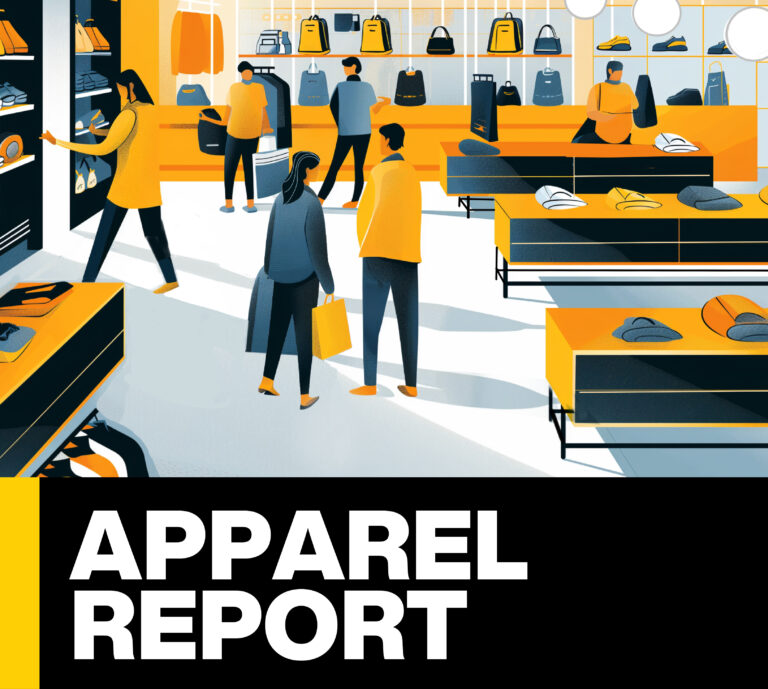×

Women in Retail interviews our COO, Lynn Gonsior, about being a female co-founder, the future of the retail experience, and so much more.

A decade ago, the iPhone 3 was still cool, the iPad was just a rumor, very few people knew of Elon Musk, and Uber was just in beta testing.
Looking back at what was being written by journalists and futurists at the start of the decade, one can sense a mix of anxiety and optimism related to the growing impact of eCommerce. The smartphone was in the process of disrupting retail with “always on” connectivity and an app-happy environment that put more power in the hands of the shopper. Today, we are living in a period of rapid, digitally driven change that is unprecedented and still in progress. For that reason, many of the decade-old predictions are still playing out, or evolving, while others were clearly dead ends.
With 2019 wrapping up, it’s time to take a moment to reflect on retail predictions from 2010 and see what actually happened, what didn’t, and what we can learn moving forward.
Smartphones are powerful connected computers that are always with us, so why not make eCommerce into a more physical experience? This was the basis for a prediction that by now we would be navigating dynamic, screen driven shopping environments that would mimic reality, without the pesky inventory. The now legendary Homeplus virtual subway store in Korea was touted as a game-changer that signaled the future.
The Homeplus concept was actually an ad campaign with the motive of driving more people to sign up with the retailer’s more conventional eCommerce site. It worked great for PR and drove engagement, but the novel concept didn’t translate into a viable business idea. The benefits of search, reviews, and portability that true eCommerce provides were absent, and the immediate gratification of physical retail was removed while still requiring physical “shopping.”
Another smartphone-centered technology heralded as the answer to supercharging the physical retail experience and fortifying it against eCommerce was iBeacons. These small transmitters were supposed to be discreetly placed throughout the retail experience and prompt phones to display information or offers right at the point of sale.
Since their launch, iBeacons have not hit the mainstream retail scene. They work great for museum visits, where they can enrich the exhibits and act as virtual docents, but shoppers don’t need or want to shop physical spaces while fielding intrusive alerts on their phones. The iBeacons still promise a way to increase engagement if used creatively for promotions but have largely been a flop at retail.
The integration of a retailer’s eCommerce business into their retail experience was predicted to take the form of the so-called endless aisle. In theory, the space constraints on product selection could be overcome by providing kiosks that augment the assortment with the entire range offered online, thus eliminating the loss of a sale. The idea was compelling but it represents the classic example of creating a solution for a problem the shopper doesn’t have.
Most shoppers research bigger purchases online ahead of time and come to the store prepared to buy, easily checking store inventory beforehand. Store kiosks duplicate the experience shoppers already have on their device and directs them to an online purchase experience that defeats the purpose of a store visit.
In 2010, the term “Retailpocalypse” had not been coined (it didn’t achieve buzzword status until 2017). What was being predicted was the growth of Amazon–and that did happen. Prime membership grew exponentially along with Amazon’s market cap. They acquired Whole Foods, became a major player in video streaming content, and brought us Alexa.
Despite the impact of online sales on shopper behavior, and record store closings, retail is not sitting still. What has happened in concert with Amazon’s growth are bold moves by major retailers like Walmart, Target, and Best Buy to retain relevance by embracing innovation and experimentation. Walmart’s eCommerce acquisitions and Target’s investment in modernizing their store experience have not only been survival moves, but growth engines. Department stores, however, continue to struggle to get back in the game.
If there is a defining term in retail for the early 2010s, it has to be omnichannel. It was the right word at the right time to frame the challenge of a retail industry that was suffering from a split personality and subsequent customer experience headache. The heavy lifting of integrating the online and offline selection, returns, brand, and customer experience took a good part of the decade, but the work is paying off for both retailers and customers.
Omnichannel integration has resulted in consistent ways to engage customers and eliminate the friction and frustrations in the shopper’s path to purchase. What once felt like doing business with two companies has transformed into something greater than the sum, providing customized experiences that exist regardless of how shoppers choose to shop–whether it be online, mobile, or physical–and enable new seamless experiences like BOPIS and customized offers.
The idea of experience in retail wasn’t invented in the 2010s but it was promoted as the essential ingredient. In response to the convenience and value offered by eCommerce, the physical experience was highlighted as needing to be an asset versus a liability for physical retailers to compete. An article from HBR titled “The Future of Shopping” stated, “For too many people, shopping in a store is simply a chore to be endured: If they can find ways to avoid it, they will.”
Retailers that emerge strongly from 2019 all demonstrate a heightened sensitivity to shopper experience. From Angela Ahrendts having steered Apple stores to new heights, to mainstream retailers like Lowes opening an innovation center, resources and investment have been successfully turned toward experience as a means of driving preference, loyalty, and a bigger bottom-line.
What do the dead ends and developments of the past 10 years tell us? No one can see the future, but we can take part in defining it if we have a clear vision of where it is headed.
The age of building a retail prototype that stays static, with a predictable schedule of updates and refreshes, is over. Today, eCommerce sites can test and optimize user experiences in real time and scale the changes across their platform in hours, not years. Retailers must continuously seek what’s next or they risk falling behind. Jumping on a seductive new technology isn’t always the answer either. Putting together a strong internal team with the liberty to experiment and engaging with partners who can push boundaries is a necessity.
Retailers must seek ways to add more value than ever to the shopping experience in order to retain and acquire customers. No business is completely insulated from the potentially disruptive move of an eCommerce threat–the fight for customers can change almost overnight. Being smart and agile is a required retailer competency. Store experience will always have a path to ongoing improvement if shopper insights are continuously sought and applied, and the brand is brought to life in fresh, exciting ways.
Our approach to success at retail – be brave, be clear, be aggressive–is built for the next decade. What works at retail today must be assumed to be less effective every day. If it ain’t broke, fix it, and if it doesn’t make you a little uncomfortable, it isn’t worth doing.
The things we credit as being the major advancements in retail in the last 10 years were not minor adjustments; they were enormous moves that paid off, made by people who had a vision and the ability to excite others about it.


